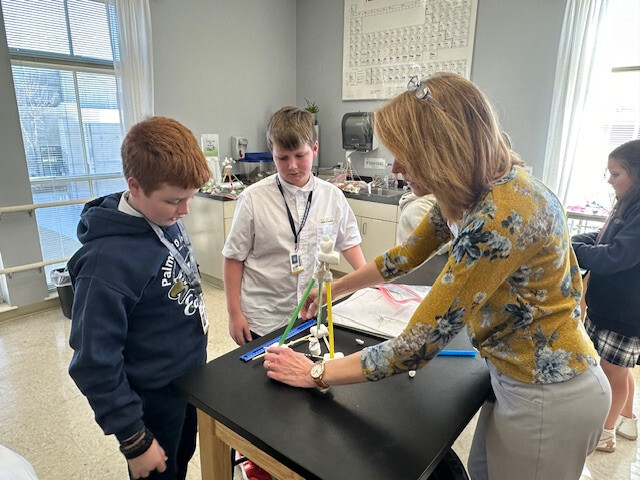Students Construct & Test Earthquake Resistant Structures!

Earth Science is a subject that impacts our everyday lives. Meteorologists study the weather and watch for dangerous storms. Hydrologists study water and warn of floods. Seismologists study earthquakes and try to predict where they will strike. In PCA’s 6th grade Earth Science class, Mrs. Kelly Rhodes and her students recently wrapped up an in-depth study of earthquakes and how they can potentially impact the Lowcountry.
Mrs. Rhodes shared more about this fascinating learning unit, and their exciting hands-on experiment:
To begin our unit, I asked the class why we needed to learn about earthquakes. Many of the students mentioned the creation mandate to have dominion over the Earth and to subdue it. Science helps us understand this broken, yet still beautiful world that God created. We must understand the dangers we face and learn to live with them. Yet, no student answered with the information that Charleston had a major 7.3 earthquake in 1886. This earthquake was felt for 2.5 million square miles - from Cuba to New York - from Bermuda to the Mississippi River. They were shocked to know this information. Now we had a personal reason to understand earthquakes.
After learning through text, notes, videos, and drawings, it was time to put our knowledge to work. The class did some research to discover a sturdy way to construct. Each team of three had to work together to create a plan and build a structure that could withstand an earthquake. They were given constraints for their structures and many different materials to use. A lab report was completed to show their thinking and reasoning. We tested with P Waves (primary waves - waves in the interior of the Earth) and L Waves (surface waves - the most severe). Most of the structures survived with little to no damage. A few collapsed under the stress. We discussed what worked best. The students all agree that triangular structures support, stable and stiffen a structure. Hands-on is the best!
